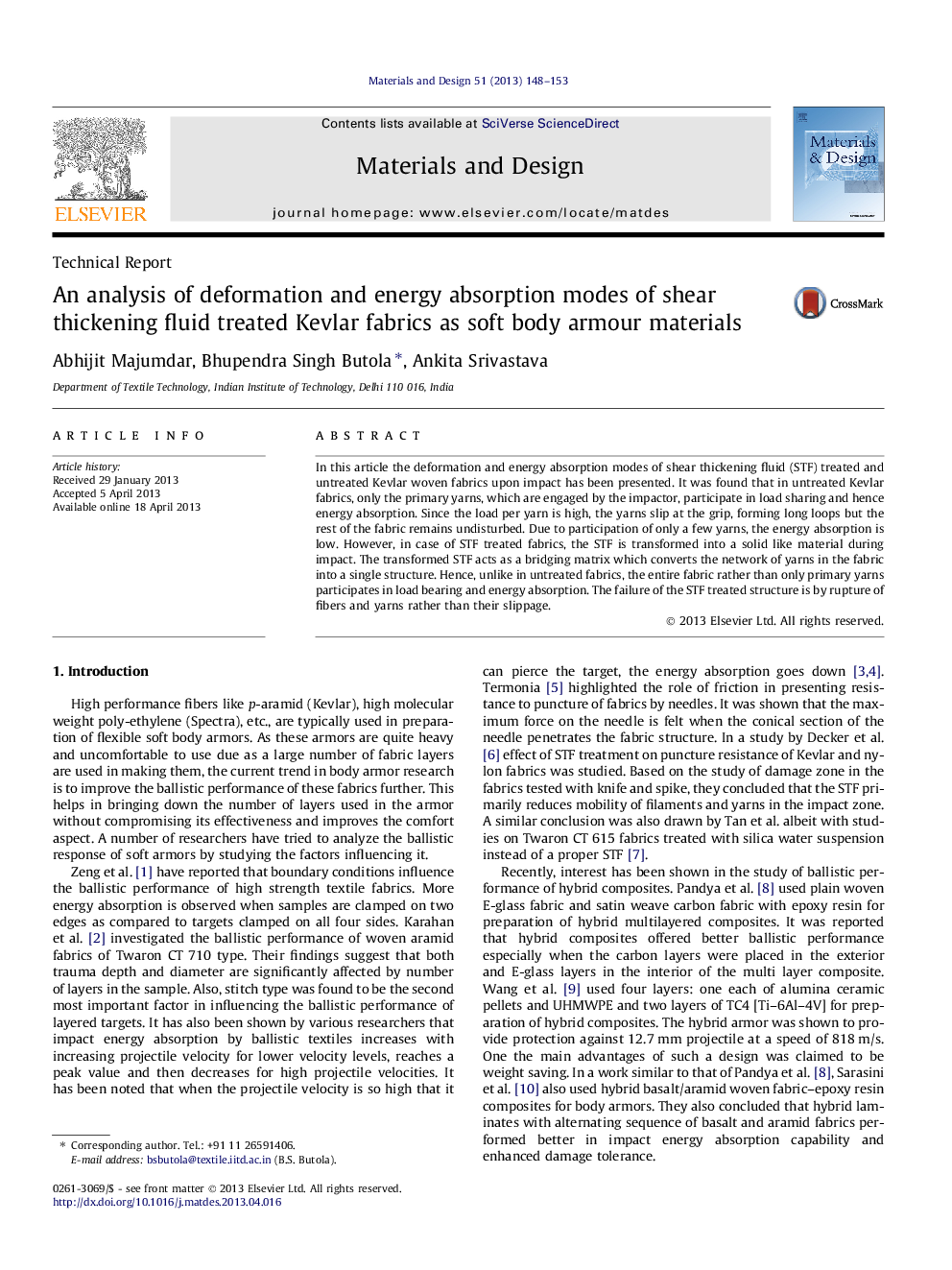| Article ID | Journal | Published Year | Pages | File Type |
|---|---|---|---|---|
| 829822 | Materials & Design (1980-2015) | 2013 | 6 Pages |
•In untreated Kevlar fabrics, impact energy absorption is mainly by deformation of primary yarns.•The structure fails mainly due to slippage of primary yarns.•For STF treated fabrics, the entire structure including secondary yarns contribute in energy absorption.•In treated fabrics the dominant failure mode is fiber and yarn rupture.
In this article the deformation and energy absorption modes of shear thickening fluid (STF) treated and untreated Kevlar woven fabrics upon impact has been presented. It was found that in untreated Kevlar fabrics, only the primary yarns, which are engaged by the impactor, participate in load sharing and hence energy absorption. Since the load per yarn is high, the yarns slip at the grip, forming long loops but the rest of the fabric remains undisturbed. Due to participation of only a few yarns, the energy absorption is low. However, in case of STF treated fabrics, the STF is transformed into a solid like material during impact. The transformed STF acts as a bridging matrix which converts the network of yarns in the fabric into a single structure. Hence, unlike in untreated fabrics, the entire fabric rather than only primary yarns participates in load bearing and energy absorption. The failure of the STF treated structure is by rupture of fibers and yarns rather than their slippage.
